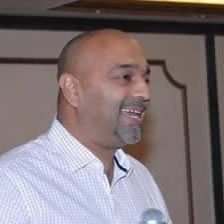We believe that a crisp articulate vision can be realized. A vision spoken with passion will stir many hearts. A good orator such as Martin Luther King, Jr. was successful in envisioning the society. Vision casting can be a combined effort; Mahatma Gandhi was the visionary and Prime Minister Nehru was the orator. Visions of a prosperous future, visions of revival, and visions of end times are broadcast daily over the microphone, radio, TV, and YouTube. Anything and everything that grabs the attention of the listener is spoken and heard. No matter how eloquent the oration of a vision, the message soon wanes and very little is applied. Most of the visions are not realized and we write them off as wishful thinking.
The art and science of management has matured in the past 50 years, giving organization leaders efficient management tools to achieve challenging goals. We have seen planning principles applied to achieve individual goals, such as running 100 meters under 10 seconds at the Olympics. Sending a man to the moon is a fine example of corporate planning by NASA. Large and midsized organizations have well-defined project plans to achieve their goals. Harvard and Stanford are researching methods to implement collective action programs that can achieve gigantic goals, such as eradicating polio or treating TB worldwide.
For many years, my team and I have been working on our organization’s vision to help children become all that God intends them to be. I searched for planning tools on managing a vision, but there were none that I could find. The question I ask is, “What are the indicators to know how much of the vision is achieved? How do we know we are progressing towards achieving this vision?” I agree it may not be possible to see all the 448 million children in India become what God intends them to be, but we can help a fraction of this number (448 children) reach their full potential. We searched within our organization and outside it for tools to manage this vision. The general feedback was “a vision is a guiding star,” “it is a distant dream,” “we don’t know how much of the vision is achieved, only God can tell” and the like.
Our search did not lead us to any conclusive answers on how to manage a vision, so we decided to think of a solution that might make the vision palpable. In the present Indian context, the education system does not encourage self-learning in schools. To test our solution, we thought of piloting an education program that will help 448 children to become lifelong learners. In our discussions with educators in Dehradun and Patna, we found most teachers do not promote self-learning practices for students. The unwritten aim of most private schools in India is to prep kids for working in business houses or medicine, or for serving the Indian bureaucracy, and this is what parents also want.
We wondered, can we change the thinking of parents, educators, and education boards so that 448 children can grow in their calling? How will these educators create an environment for students to grow in their specific gifting? The parents’ response to this school of thought is, “Why do you think private schools, Catholic schools, and colonial schools charge an exorbitant fee?” These schools have fancy facilities, and they provide opportunities for children to get ahead in the competition. We began to think that implementing a program to achieve the vision had hit a concrete wall. Our cumulative thought was: “Let’s not fiddle with the system. It is best to have the vision on a plaque at the office reception area for the rights-based donors to see.”
To live out a vision, the visionary must hold the vision higher than personal self-esteem, and it requires sacrifice of self. A case in point is that of Bob Pierce of World Vision who gave up his position so that World Vision could appoint new leaders to accomplish the organization’s vision.
Students and parents bear the burden of examinations in Indian schools, and to lighten this burden, reforms are incorporated in the Right to Education Act of 2009. However, reforms require a shift in teaching and learning principles. Can millions of teachers and educators change their pedagogy? To do that would be like shifting tectonic plates of education in India. For the entrenched and institutionalized educators, the ground will shake; the winds of change will usher in a tsunami that will threaten their teaching style. There has to be some disaster preparedness for educators before new education principles will be accepted in India.
We realize there are many aspects to achieving the vision. So it is beyond the individual capacity to fulfil a social vision. A visionary has to gather people around the vision. A way to do it is to link the vision to Kingdom values because people with the common Kingdom values will gravitate to each other for a long period of time, maybe even a lifetime. People with common values and similar vision will be the engine that will give momentum to the new vision.
- The first step towards accomplishing the vision is people having common values.
- The next step is to survey the external environment, analyze core group strengths, and list any threats.
- The rest is common sense management practice: Develop a strategy, pilot the project, showcase the success, form partnership agreements around common goals, pray for God’s discernment in every decision, keep calm and carry on.
Enough said. The purpose of this writing is to initiate a dialogue on managing a vision that can help visionary leaders to discover appropriate tools and techniques for achieving their God given vision. I hope to hear more on this subject.


 Gary Kamaal
Gary Kamaal
